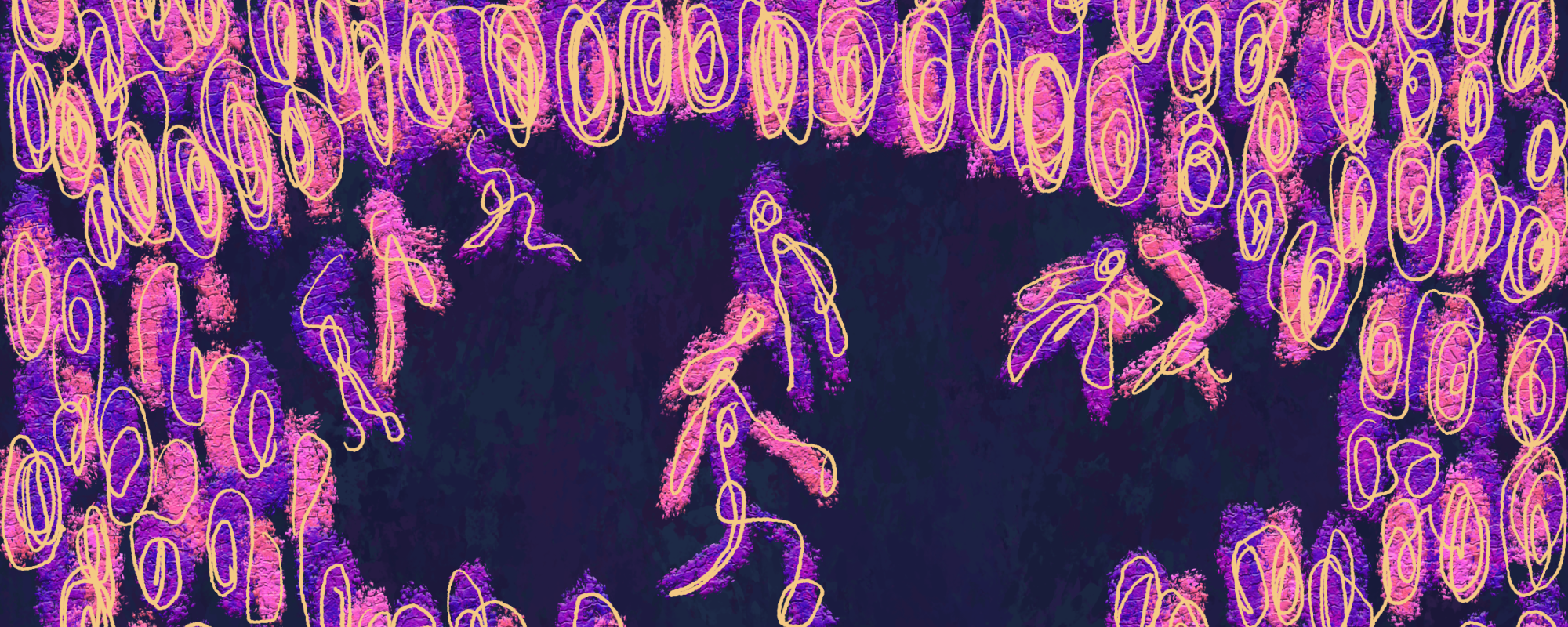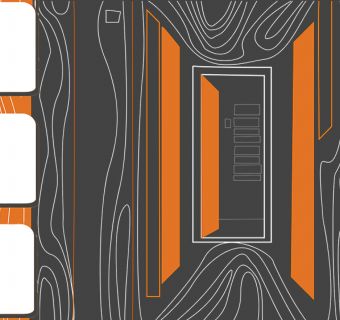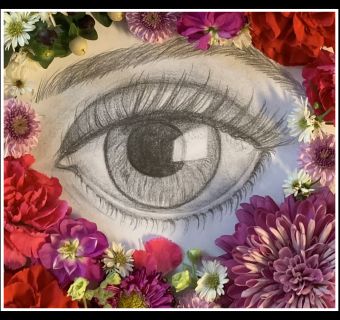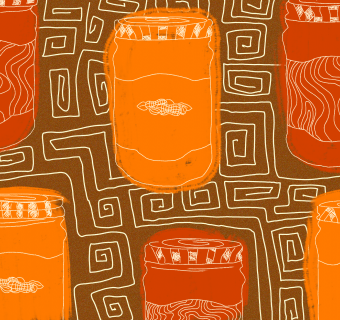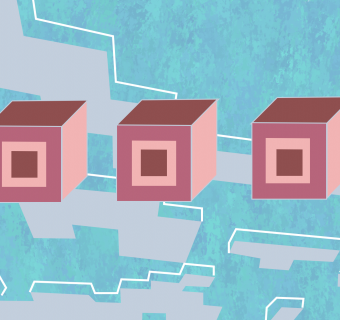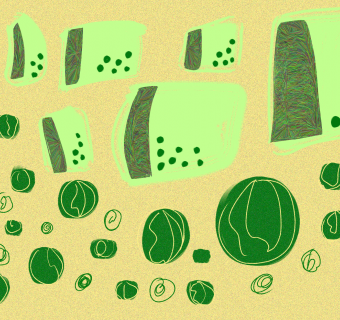Most of the time, I go to concerts alone. I enjoy the peace and quiet, the freedom of not having to stress about who is driving and when we’re going to leave and all those details. Of course I love having a friend with me as well, but honestly when I do, they usually start raising questions when I hand them my phone and tell them I’m gonna go join the circle of people shoving and kicking each other—which, for the record, is entirely understandable.
For the uninitiated, while there are a few different types of mosh pits, the term generally refers to when the crowd at a concert opens up a pocket of empty space, where people then basically let out whatever frustrations they have on each other by shoving and dancing, usually rather aggressively. The first time I ever joined a pit I was maybe 14 or 15, which I understand is a little on the young side, but it’s a lot safer than people seem to think and doesn’t really warrant the amount of shock and scandal I see from people’s reactions on a semi-regular basis.
It would seem most people who claim to hate mosh pits don’t fully understand what they actually are.
I’ve noticed people love to point at any concert-gone-wrong and blame it on moshing. For example, Travis Scott’s AstroWorld event in late 2021 was a horrible tragedy that had many issues leading to its failure, but moshing was not one of them. Based on witness accounts and video footage, there were no open cells of people moshing. There wasn’t even any room for that due to the actual problem, crowd crush. Too many people were packed together, the event holders lost control of the massive crowd, and when you lose control of a crowd that big, the only way to regain control is to disperse the whole crowd. Mosh pits are by definition separated within the rest of the crowd for this exact reason: it’s much easier to close a pit then shut down a whole crowd. It would seem most people who claim to hate mosh pits don’t fully understand what they actually are.
What people don’t realize is that mosh pits are a very culture-focused phenomena with rules that most everyone involved knows, and no shortage of people willing to step in when someone doesn’t want to follow those rules. Originating in hardcore punk communities of Washington D.C. and Los Angeles in the 1980s, moshing or “slam dancing” did receive a lot of criticism for posing a danger to other concert-goers and causing injury in its early days. However, since then, it has developed into a staple of most punk or hardcore-derivative communities like ska, metal, post-hardcore, and the like.
The point isn’t to hurt people. It never was. The point of mosh pits was and is to enjoy a physical, cathartic experience together, as a community. The culture developed protocol to keep everyone safe, and passing down those rules to new members of the subculture is a point of pride. These subcultures (punk, rock, hardcore, and metal, to name a few) have very hard lines between them. Members from different communities often may not get along, and these cultural differences are even more noticeable when attending concerts held by different bands or even different venues. Yet, if you were to ask anyone, regardless of affiliation, what the first rule of the pit is, they would all give you the exact same answer verbatim: if someone falls in the pit, you pick them up. I can attest to this universal truth, as someone who has fallen many times over the years; there has never been a single time where I was left on the ground for more than a second. When I was 15 and tiny, a huge muscle-y guy caught me by my shirt collar before my knees even hit the ground.
The point of mosh pits was and is to enjoy a physical, cathartic experience together, as a community.
Of course that isn’t the only rule, as the list varies depending on where and who you ask, but punching is generally frowned upon, the face, head, and groin are not to be touched, and more importantly, if someone wants out, you drop everything and help them get out. The point is, the community is self-regulating and participants want everyone to be safe. More often than not, these communities are born out of common struggle and find unity in that. Punk was born out of working class communities, goth has been known to be a safe haven for those wanting to explore gender nonconformity and androgyny, ska-punk was born out of a Jamaican musical revolution brought on by a post-World War 2 radio boom, later combined with new-wave punk during the 1970s, the list goes on. Common struggles like that naturally give way to communities focused on protecting one another, because no one else will.
Mosh pits only go wrong when the culture stops being conducive to community. In the 1990s, Many nu metal artists exploited the frustration and repressed anger of college-aged white men and created a sub-genre mostly focused on individual expressions of anger that grew selfish and violent, leading in part to the Woodstock ‘99 riots. There were many sociological and cultural reasons behind that festival going wrong, but among the chaos, mosh pits clearly did not benefit from the self-policing necessary to keep the space safe for everyone, because in that environment, the audience didn’t feel that necessary sense of unity.
In all the years I’ve been an active participant in concerts and pits, I remember people picking me up when I fell, passing around water bottles, holding up found items and working together to figure out who lost a ring or a wallet. I remember picking up strangers to help them crowd-surf to the front and coordinating with the people around me to shout in unison to get the band’s attention because someone just got engaged. All of those moments felt as meaningful as the ones spent pushing and shoving and screaming together. In the middle of a mosh pit, you feel like a part of the organism, moving and feeling as one being. It’s honestly really hard to describe because while I’ve tried to replicate that feeling elsewhere, I just don’t think it exists outside of a venue.
Anger isn’t a very socially acceptable emotion, especially for kids, even more so for people who aren’t men.
Truth is, when I was in high school, I was a pretty lonely, angry kid. Anger isn’t a very socially acceptable emotion, especially for kids, even more so for people who aren’t men. I had a lot of bad coping mechanisms I used to avoid dealing with bad emotions and situations. I had a self-harm addiction, isolated myself, drank too much, and eventually developed an eating disorder. Joining my first mosh pit at such a young age felt like that at first, felt like another bad idea that was at least better than the alternative. I realized I was wrong about that within the first song. This was different, because even if I was screaming and angry, I wasn’t alone anymore. My first pit was outside, on a sunny day in July. My legs were literally caked in layers of dirt and I fell. A lot. Someone picked me up every time. It felt good.
Last November, I went to a small concert (with mandatory vaccines and masks) for the first time since February of 2020. I went alone, which was oddly more nerve wracking than usual. Although I wasn’t alone in that feeling, everyone seemed hesitant to be so close in the beginning but by the second song, all that energy was being released in a massive pit that stayed open throughout the show. The next morning, my whole body ached, I had bruises on my legs and arms, and I had completely lost my voice. I also felt lighter and healthier than I had in years. I’m aware it’s not a suitable lifestyle for many people, but I mean it when I say you couldn’t pay me to give this up.
Playlist (AKA My Magnum Opus):

